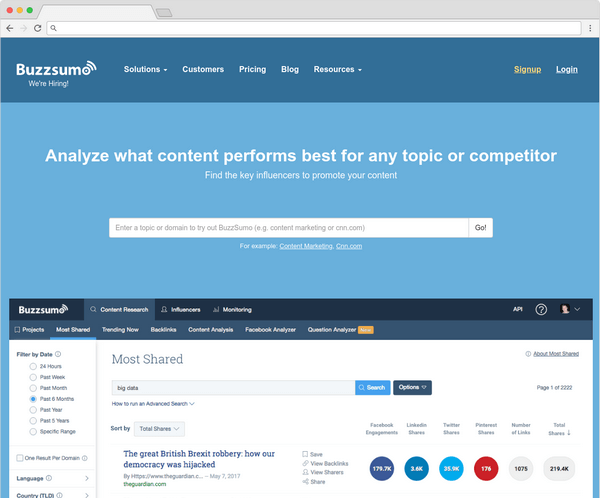Social media, with its opportunities for direct engagement of the audience, influencer marketing potential, etc., is a great platform for content syndication or the direct promotion of your site.
However, you need to know not only how to actually get people to share your content and what you need to post so that they might follow the link to your site. You also have to make that your site is capable of supporting and aiding these efforts. Here are some of the ways to do that.
Bearing the Load (Page Times)

Even though this is jumping a bit ahead, let’s assume that you’ll manage to attract inordinate amounts of traffic to your site, are you sure that you can support a drastic increase in popularity? We are not talking just about resources like bandwidth and storage. But also about the fact that more attention means more scrutiny.
The technical and functional aspects of your site which were just ‘good enough’ before, need to be upgraded to ‘absolutely immaculate’. If you don’t want the only thing to come of your exposure to be a bigger audience to get embarrassed in front of. Naturally, this pretty much applies to all of the other aspects of your site, but let’s first take a look at some of the more essential technical optimization aspects:
Resources
You start by taking a look at your current hosting plan and assessing how much of a spike in traffic it would be able to absorb. If that is close to what you’re expecting or hoping for.
Don’t skimp on this, always leave some wiggle room by getting hosting which offers more resources than you think you might need. Even with the heaviest of traffic.
There’s probably no need to say this – unless you have an amazing shared hosting plan, you might want to think about changing your hosting type to VPN/Cloud or dedicated if you can afford it, and think you need it, otherwise, you can probably just upgrade your existing package.
Efficiency
While you’ve ensured some redundancy, your site still needs to be as resource-efficient as possible. That means using browser caching when allowed, minifying images and compressing files, avoiding dynamic content when possible, etc.
No amount of server processing power or bandwidth is going to be enough if your site is not optimized to use these resources sparingly.
UX
There’s no point in getting people to visit your site if you don’t try to make their stay pleasant. You need to ensure they can enjoy doing what they came there to do. That they get the answers they were looking for.
This means keeping the page loading speed as high as possible, so as not to increase your bounce rates by the site failing to respond in the short time-frame allowed by the constantly shriveling average attention span. It also means that your site should be easy to navigate. Regardless of the device used for browsing or the exact visitor intent.
Conversions
While you want your visitors to have a pleasant stay if your site is in any way commercial. You also probably have something that you would like them to do for you as well. You may want them to become your customers, or you just might need some info for your Buyer Persona sheet. Them stumbling into to the course of action you’d find ideal doesn’t happen on its own.
Your visitors need to be guided toward conversion through careful user behavior analysis and audience segmentation. The creation of landing pages based on that segmentation, placing calls to action wherever appropriate, etc. Just don’t fall into the common trap of subordinating everything else to your conversion rates.
Regardless of how efficiently you’ve optimized the buyer’s journey. If you compromise the site’s fluidity or any part of its general appeal or worth. You won’t have any visitors to guide through that painstakingly constructed funnel.
Content is no Longer Good Enough, They Need to be Thrilled

If you haven’t been building it with an existing social media strategy in mind. Your site’s content might need some work. Tools like BuzzSummo allow you to easily find popular content in your niche. But so do searches on the social media networks themselves. Or a Google search with the site, operator and the URL of the platform you are interested in.
Finding shared content that is relevant to what you are doing. Observing its every aspect, and trying to implement what you’ve learned without plagiarizing anything or anyone is not only the first thing you should do. But something that you should never stop doing. This will inform everything from topic choices for your next blog post to deciding whether it’s better to translate an idea into a video or an infographic.
When it comes to the content itself, it needs to have a hook, to be shareable and engaging. While studying which keywords attract more attention on which platform and how to make an intriguing post title is necessary. It only gets you so far.
True, many people share posts without ever reading the content. But you don’t want to let down the ones who do read it. Because they are exactly who you were after in the first place. In other words, when formulating some sort of editorial philosophy or a set of values, and deciding what your next post will be about.
It’s not recommended to go around looking for the most controversial or equally superficially attention-grabbing subject. But if you do find a way to apply a moderate dose of that kind of thinking when discussing the subjects that actually deserve to be discussed. You probably won’t be worse off for it.
Finally, when we say that your content needs to be shareable, that doesn’t just apply to its narrative, but to its form as well. It needs to be formatted so that attention is diverted to where you need it. One of the easiest and most effective ways of doing this is by taking especially pertinent quotes from the text. Emphasizing them or displaying them as an instantly shareable snippet.
Naturally, each of your content pages should have prominent and accessible sharing buttons, and you might even want to occasionally, subtly, of course, remind your visitors of their existence. We are not kidding about the ‘subtle’ part. It gets really annoying and off-putting really fast if it seems forced or like mild emotional blackmail.
Conclusion
There’s no point attracting an audience if you can’t provide them with what they came for. If you don’t have systems in place to make their stay as informative and lucrative for both parties as possible.
Aside from perhaps having to change your hosting and making minor or major tweaks to your site’s overall performance and capacities. You might also need to reassess different aspects of your content – from its tone to the topics you are discussing.
While some of these changes are purely adaptive. Others are not there only to bear the weight of the new visitors. But will actively help you in attracting them.





Comments are closed.